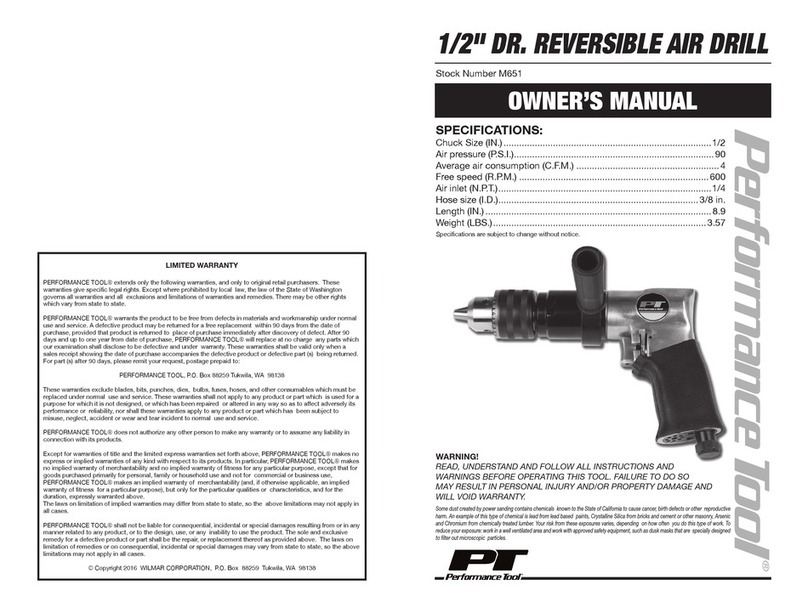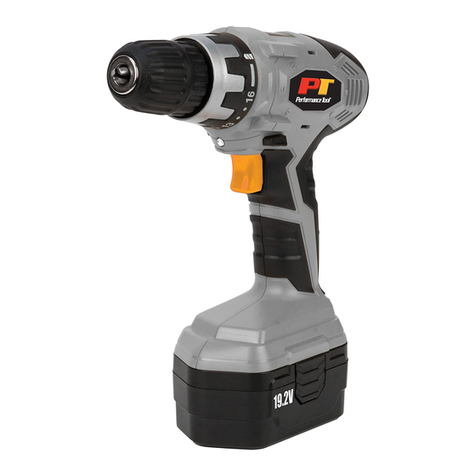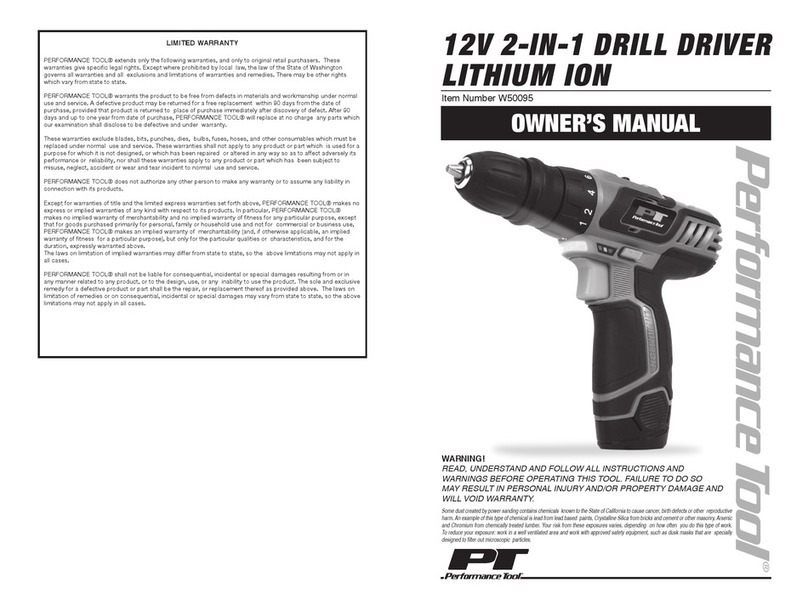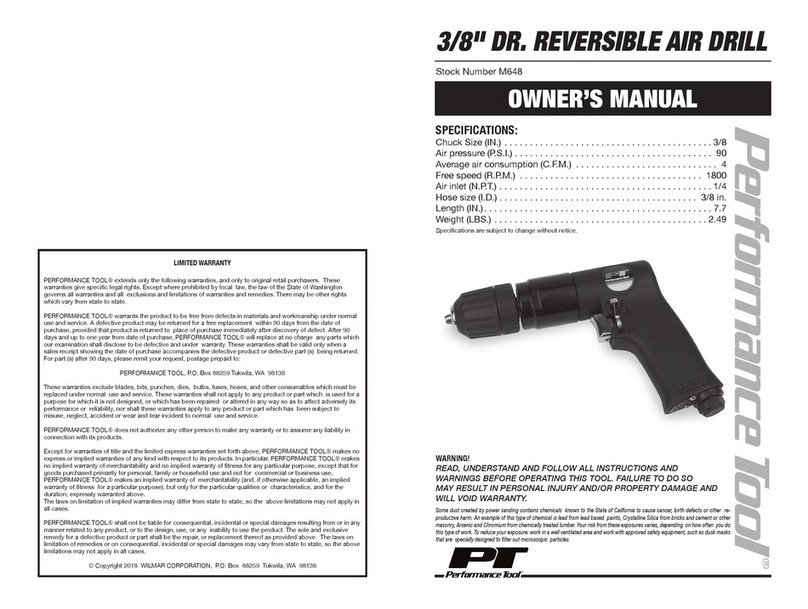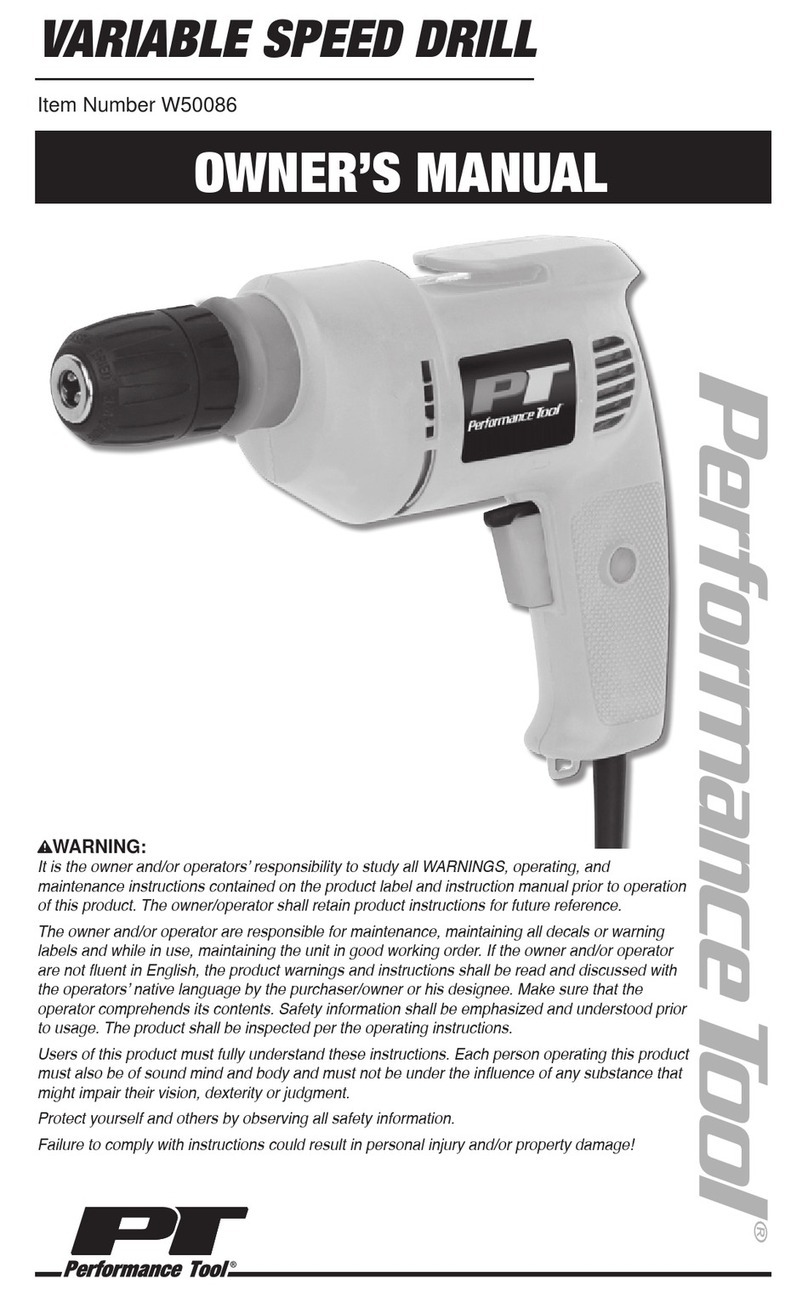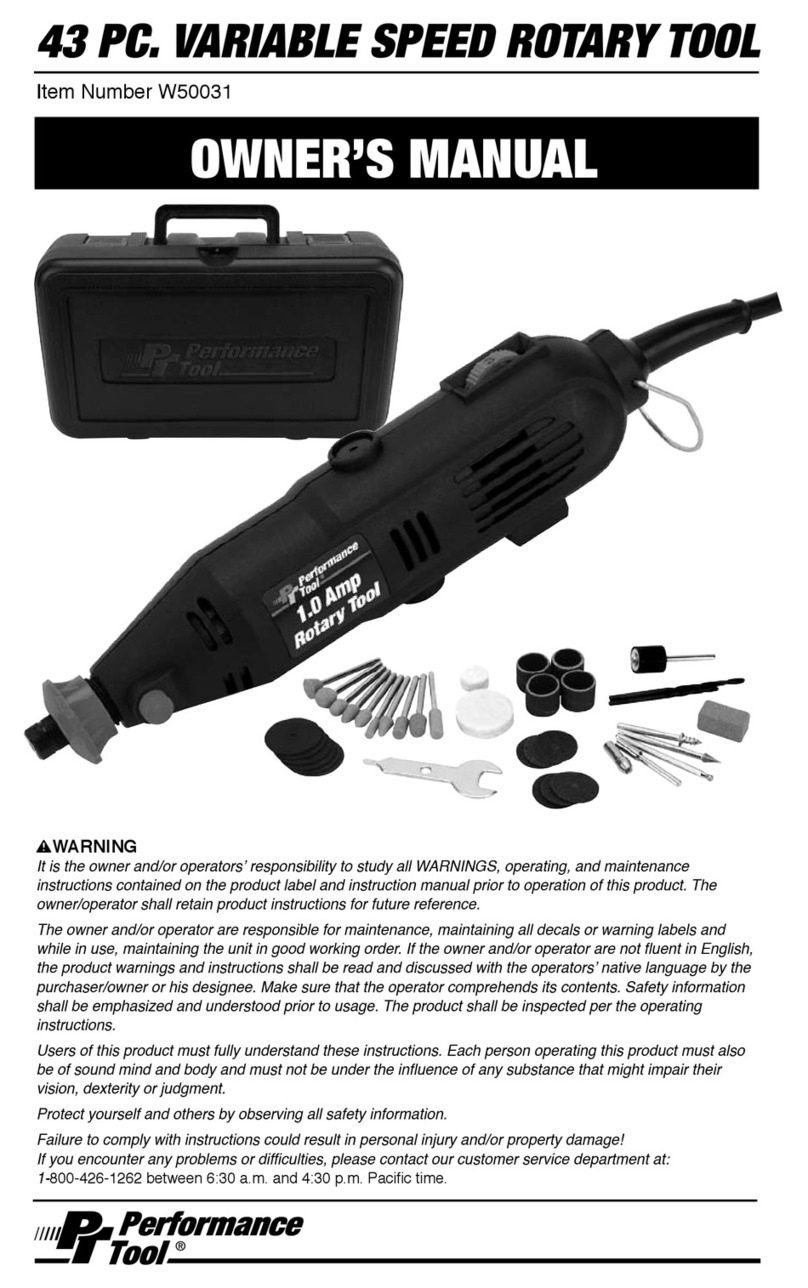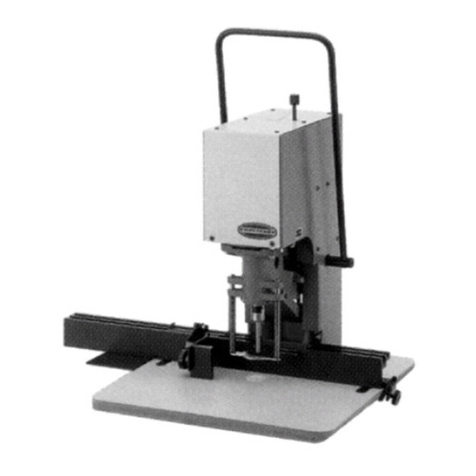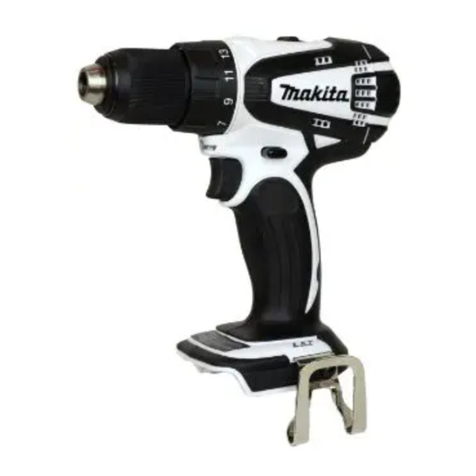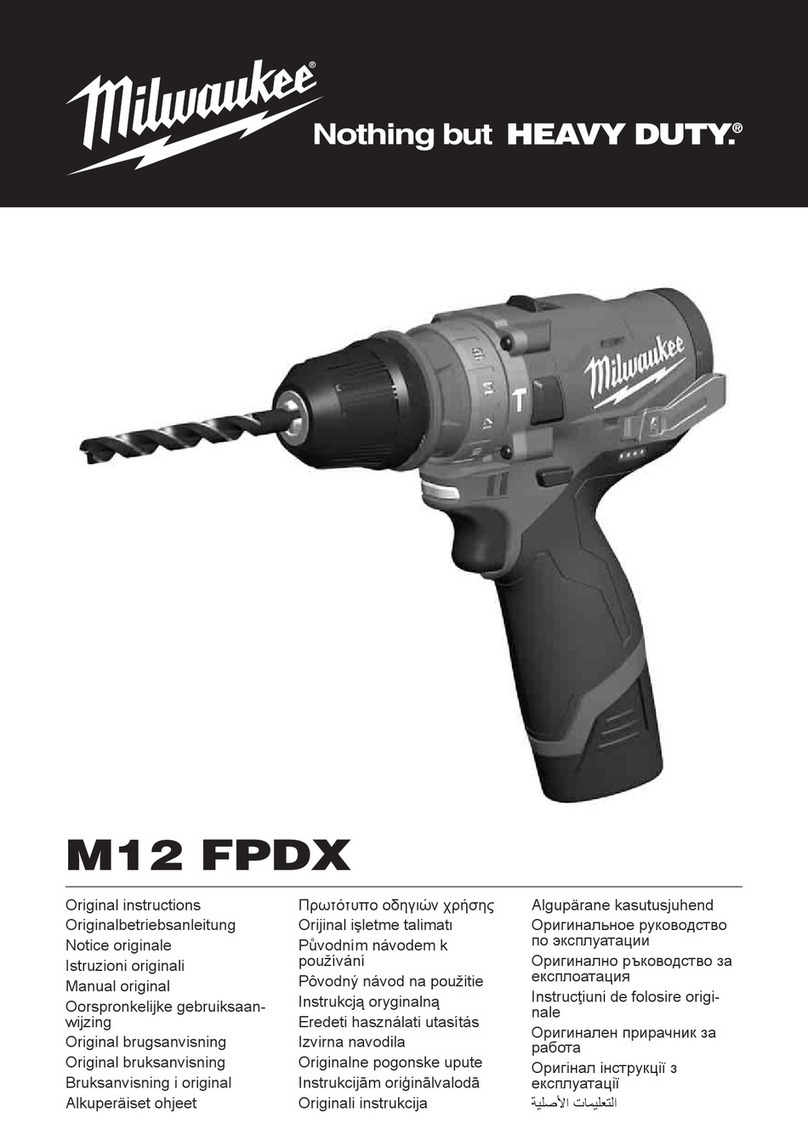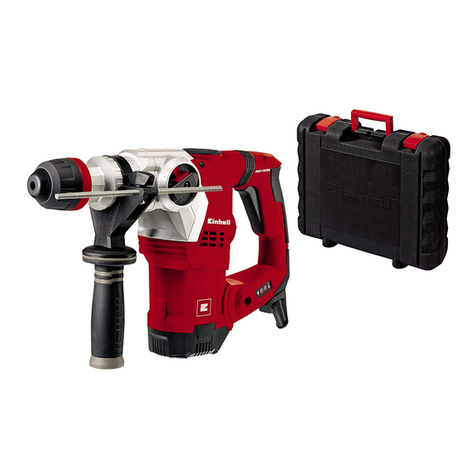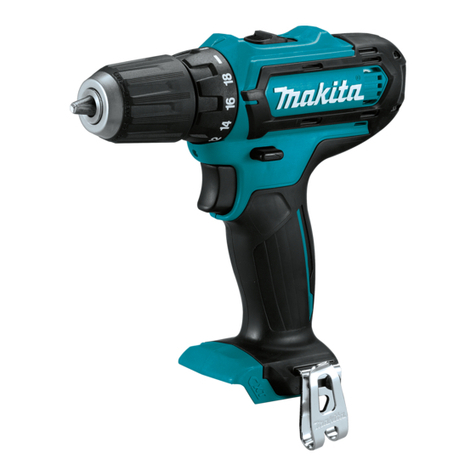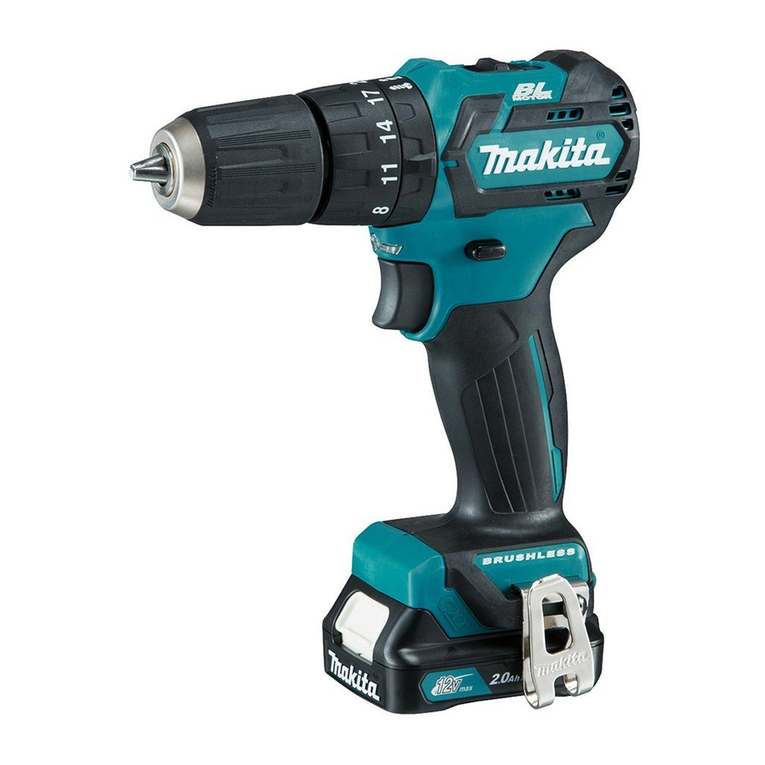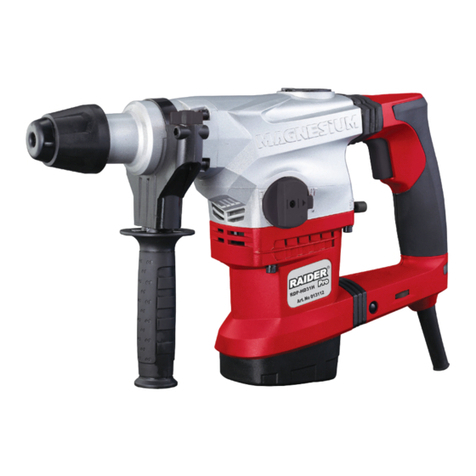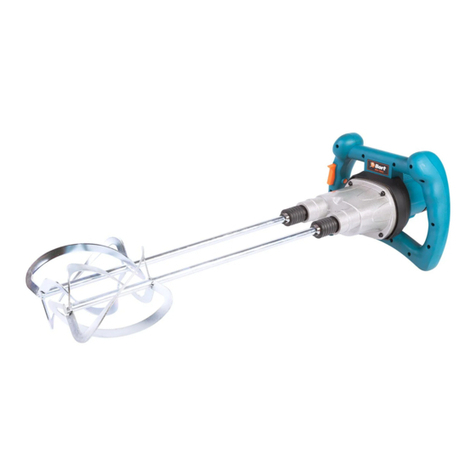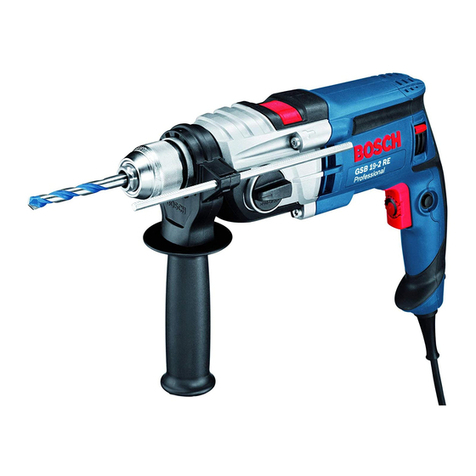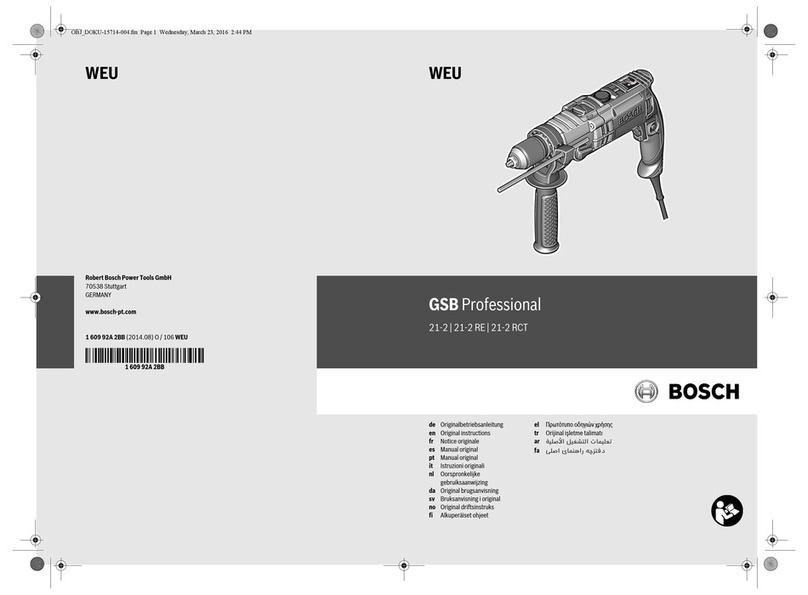1 2
IMPORTANT SAFETY INFORMATION
1. Keep work area clean. Cluttered areas invite injuries.
2. Observe work area conditions. Do not use machines or power tools in damp or wet
locations. Don’t expose to rain. Keep work area well lighted. Do not use electrically
powered tools in the presence of flammable gases or liquids. Do not bring combustible
materials near the tools.
3. As with any tool, use common sense when operating. Do not wear loose clothing or jewelry
that could become caught by moving parts, causing injury. Operate tool a safe distance
from yourself and others in the work area.
4. Keep children away. Children must never be allowed in the work area. Do not let them
handle machines, tools, hoses or extension cords.
5.
Store idle equipment. When not in use, tools must be stored in a dry location to inhibit rust.
Always lock up tools and keep out of reach of children and other untrained persons. Switch off
all unused electrical tools when stored. Tools are dangerous in the hands of untrained users.
6.
Always wear approved eye protection when using tools. If raising dust, wear a suitable mask.
7. Work Safe. When wearing gloves to operate the tool, make sure that the gloves do
not
interfere with operating the Trigger. Test your gloves with the Trigger before attaching the unit
to an air source. Keep your finger away from the Trigger until you are ready to work. Never
start the tool unless you have a firm grip with both hands and you are positioned at your
work piece or area. Before using the tool, know what is directly underneath the work area or
work piece. The tool can quickly penetrate material. If working directly on the ground, make
sure you are not directly above shallow cables, lines, or pipes. Keep your limbs and body
clear of the tool. If an accessory or attachment breaks off, the tool tends to surge forward
suddenly. Operate tool a safe distance from yourself and others in the work area. Make sure
the immediate area is clear of other people or animals. Spectators must stay at a safe
distance. Never point the tool or the air hose (not included) at anyone. Keep proper footing
and balance at all times. Do not reach over or across running machines, hoses, etc.
8. Do not operate any tool if under the influence of alcohol or drugs. Read warning labels on
prescriptions to determine if your judgment or reflexes are impaired while taking drugs. If
there is any doubt, do not operate any tool.
9. Be sure air is in OFF position when connecting tool to air supply.
10. Use only those accessories that are designed for use with tools. For example, with impact
wrenches do not use ordinary sockets. Use impact sockets for all air tools.
11. Be sure to disconnect tool from air supply before changing accessories, performing service
on tool and when not in use.
12. Follow air source manufacturers' directions for connection of regulators, filters, and other
accessories to air source. Do not install quick couplers directly on tool as they put
unnecessary strain on the air inlet threads possibly causing them to wear out prematurely.
Instead, install them on a short length of air hose attached to the tool.
13. Check for damaged parts. Before using any tool, any part that appears damaged
should be
carefully checked to determine that it will operate properly and perform its intended
function. Check for alignment and binding of moving parts; any broken parts or mounting
fixtures; and any other condition that may affect proper operation. Any part that is damaged
should be properly repaired or replaced by a qualified technician.
WARNING!
READ, UNDERSTAND AND FOLLOW ALL INSTRUCTIONS AND
WARNINGS BEFORE OPERATING THIS TOOL. FAILURE TO DO
SO MAY RESULT IN PERSONAL INJURY AND/OR PROPERTY
DAMAGE AND WILL VOID WARRANTY.
IMPORTANT SAFETY INFORMATION
14. Maintenance. For your safety, maintenance should be performed regularly by a qualified
technician using original PERFORMANCE TOOLS® replacement parts. Failure to do so can
lead to accidents for the operator. Use of any other parts will void the warranty. Only use
accessories intended for use with this tool. Approved accessories are available from
Performance Tool®. Use only accessories that are recommended by the manufacturer for
your model. Accessories that may be suitable for one tool may become hazardous when
used on another tool.
Some dust created by power sanding contains chemicals known to the State of California to cause cancer,
birth defects or other reproductive harm. An example of this type of chemical is lead from lead based paints,
Crystalline Silica from bricks and cement or other masonry, Arsenic and Chromium from chemically treated
lumber. Your risk from these exposures varies, depending on how often you do this type of work. To reduce
your exposure: work in a well ventilated area and work with approved safety equipment, such as dusk masks
that are specially designed to filter out microscopic particles.
WARNING:
Repetitive motions or exposure to vibration may be harmful to your hands and arms.
WARNING: This product and its packaging contain a chemical known to the State of California to cause
cancer, birth defects, or other reproductive harm.
WARNING:
The warnings, cautions, and instructions discussed in this instruction manual cannot cover all
possible conditions and situations that may occur. It must be understood by the operator that common sense
and caution are factors which cannot be built into this product, but must be supplied by the operator. Read and
understand all of the instructions provided in the instruction manual of this product, as well as, any other tool (s)
used with this product.
!
1.
Hold the tool by insulated gripping parts while performing an ongoing operation in which the cutting
element or screw may contact hidden wiring. Contact with a wire “under stress” can put the metal
parts of the power tool exposed “under stress” and cause an electric shock to the operator.
2. Use appropriate detectors in order to show the hidden supply ducts or consult local
companies. Contact with electrical lines can cause a fire or electric shock. Damage to a gas
line can cause an explosion. Drilling a water pipe can cause damage.
3. Stop the appliance immediately when the tool blocks up. Expect coupling reactions that
can cause major consequences. The tool crashes if:
The appliance is overloaded
If you get stuck in the piece on which you are working
4. Hold tightly the portable electric tool. Because of the unscrewing or screwing, may have,
high reaction instantly.
5. Fix the piece that is going to be worked on. A piece well-set or fixed in a vise piece is fixed
more securely than held in hands.
6. Keep workspace clean. Mixtures of materials are particularly dangerous. Dust from light
metals can be explosive or flammable.
7. Before putting off the portable electric tool, wait until it is completely stopped. There is a
risk that the machine blocks up, which represents a loss of control over it.
8. Do not open the battery. Risk of short-circuit. Protect the battery from heat sources such
as direct exposure to sun and heat. There is a risk of explosion.
9.
Vapors can escape in case of damage and improper use of the battery. Ventilate the workplace
and in case of discomfort, consult a doctor. Vapors may pose irritation in the airways.
10. If the battery is defective, liquid can go out and come into contact with nearby objects.
Control the elements affected. Clean or change them, if necessary.
SPECIAL SAFETY RECOMMENDATIONS
